Power meters have become an essential tool for training and optimising the performance of professional cyclists and they are also now becoming popular among amateur cyclists. Here, we will look at the reasons for their success and the types of power meters available.
What is a Power Meter?
A power meter
measures a cyclist’s power output, and this is calculated by measuring the force applied to the pedals and the angular velocity, or cadence,
which is then recorded in watts (W)..
Force is usually calculated using a strain gauge, which varies in electrical resistance according to the pressure applied to the pedals. The angular velocity data is provided by a cadence sensor. Without going into complicated formulas and technical explanations, the important thing is that they allow you to record this power at a given moment and over a period of time, obtaining essential parameters for analysing your performance and planning your training sessions, such as maximum power, average power, watts/kilo, thresholds, work zones, etc.
The
most important advantages of training with power data and the reason for its success, compared to the heart rate monitoring system are:
-
Instant recording of changes in intensity. A change in power is reflected immediately, while the pulse needs time to adapt to this change. In short sets or workouts, for example, you can finish the set before the heart rate is able to reflect the intensity.
-
Power output is a more objective measurement than the heart rate, which varies, due to many external factors such as temperature, rest, digestion, exercise time, etc.
-
The accuracy of a power meter makes your performance very predictable in competition or on demanding rides. This is one of the most criticised aspects by opponents of the use of power meters during competition, who claim they have taken the excitement out of racing. But we will leave this complex issue for another time.
These advantages have led to power data becoming the basis for training control and planning, although heart rate continues to be an important factor for complementing information on your physical condition.
But, although few in number,
power meters also have some drawbacks:
-
The main issue is the additional investment involved, because although increasingly more affordable options are appearing, prices start at several hundred euros.
-
You need to have a basic understanding to make the most of the data provided and to monitor and improve your performance. However, this can be solved with the many training apps available or with the advice of a trainer.
Types of Power Meters
The different types of power meters depend on where they are located on the drivetrain. The location influences the data recorded, because it loses power, the further away it is from the pedals, which is where power transfer takes place.
But, in general, quality brands have managed to make data
very reliable and even
comparable from one brand to another. The margin of error of the power meters we will be looking at is between 1% and 2% and cyclists give most importance to the
constancy and reliability of their records, so that the references used to mark
thresholds and
training zones are valid.
The power meter sensors can be placed in the:
-
Rear wheel hub
-
Spiders and chainrings
-
Crank arm
-
Bottom bracket
-
Pedals
-
Shoes and cleats
To choose the most suitable one for you, you will need to take
various factors into account and we highlight the most important below:
-
Mechanical compatibility with your bike components, especially in the crank and bottom bracket systems
and electronic compatibility with the devices that control the power meter. You will need to check the communication protocols and ensure they are compatible with the GPS and virtual simulators you use.
The protocols are usually
ANT+ y/o
Bluetooth Smart.
-
Easy to fit and remove, if you want to use it with more than one bike.
-
The weight, especially for competition
Now we will look at the different
types of power meters and
their features,
and the best-sellers.
We will not include systems that are limited to estimating power, using factors that are external to the drivetrain, such as those located on the handlebars or in electronic devices.
1. Rear Wheel Hub Power Meters
We will start with power meters housed in the
rear wheel hub, which is the furthest from the pedals.
Power Tap designed one of the best selling rear wheel hub power meters that lasted for years, before being overtaken by newer systems. It can be purchased either as a complete wheel or just as the hub for mounting on any type of rim with the same number of spokes.
Pros: easy to fit and swap the wheel from one bike to another.
Cons: This system can't measure both legs independently and if you change the wheel during a race and the replacement wheel doesn't have the gauge, you’re data will not be recorded. Prices are in the high range.
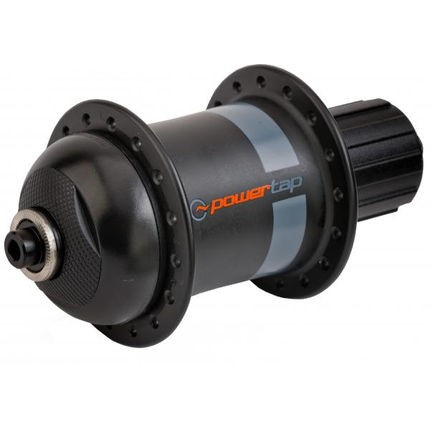 Power Tap G3
Power Tap G3
gives a combined measurement in the rear hub of power from both legs
Weight increase: 325 g. Approx. 100 g. heavier than a high range hub without a power meter, such as the DT Swiss 240S.
Protocol: ANT+
2. Power Meters in Spiders and Chainrings
Brands, such as
SRM,
SRAM,
FSA or Shimano opt for placing the power meter on the spider or chainring, in the case of the
Power Tap C1.
The spider is one of the most reliable and accurate systems. It has become popular among professionals and is the favourite of big brands such as
Specialized and
Scott who install it in their top-of-the-range collection.
Pros: Reliability and precision. Measures both legs individually.
Cons: Little or no swapping between bikes, because this would involve removing the whole bottom bracket, so it has to stay on one bike. Prices are on the high end.
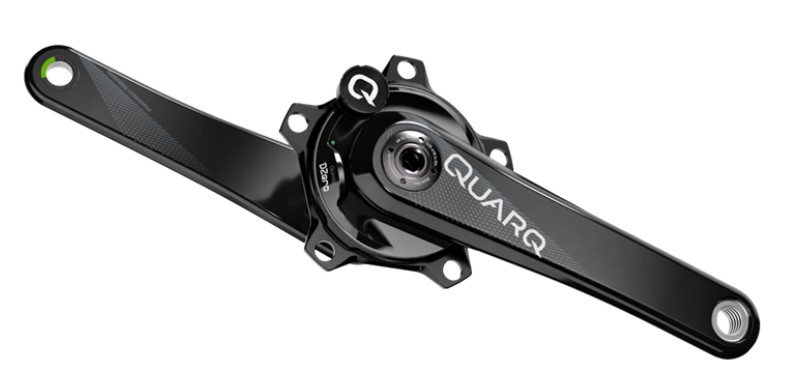 Sram Quarq DZero
Sram Quarq DZero
Measures both legs individually.
Weight increase: Depends on different models. Increase around 150 g.
Protocol: ANT+ and Bluetooth
3. Crank Arm Power Meters
Similar to the spider measuring system, the crank arm power meter has the same level of precision and a similar price, but there are also more attractive options that
are installed on a single crank and reduce the budget and weight considerably.
4iiii, is a top-selling brand that has made an important niche for those who
want a crank power meter using a very tight budget.
The design incorporates the power meter in the
left crank, and data is collected and estimates the total power output with surprising accuracy given its price.
Just
replace the original crank with the 4iiii, which is exactly the same, and set up the device. The left crank option is currently only available for best-selling road and MTB Shimano models. Other brands measure both cranks and even allow the possibility of inserting the power meter on your own crank, but prices are increasing.
Pros: Reasonably priced models start at 300€. Easy to fit. Excellent value for money. Very low weight at
just 9g. for the
4iiii.
Cons:They only measure one leg. They are not compatible with all crank models.
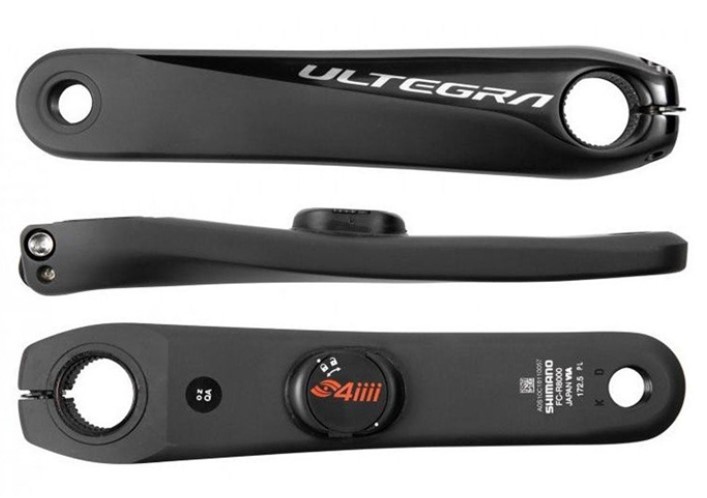 4iiii left crank with power meter
4iiii left crank with power meter
Measurement of just one leg
Weight increase: Increase of just 9 g.
Protocol: ANT+ and Bluetooth
4. Bottom Bracket Power Meters
In this case,
the power meter measure the torque inside the bottom bracket. The Spanish brand
Rotor has gained a leading position in this type of power meter with the
INpower, which measures on a single crank, and the
2INpower, which measures on both.
Pros: The components are hidden in the bottom bracket for better protection. Versions are available for almost all types of bottom brackets on the market. Lightweight. It records how your force is applied to the pedal during
360º crank rotation, providing important information on your pedalling performance, apart from all the power parameters, which you can analyse with the
Rotor Power App.
Cons: Like the spider models, it can’t be swapped between bikes. It only measures one leg in the case of the Inpower and its price is at the high end, but it is high quality in terms of both technology and construction.
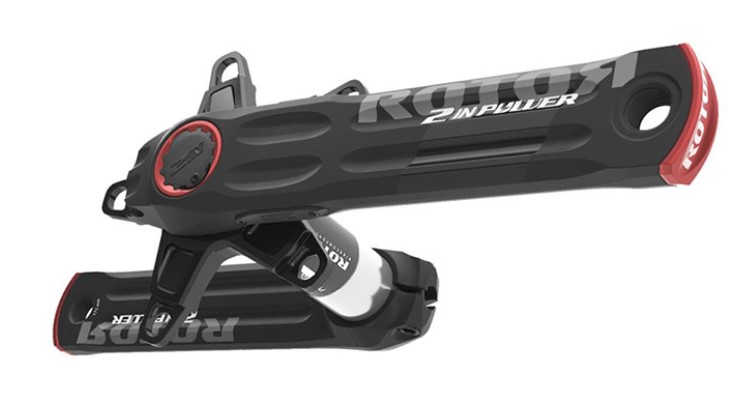 Rotor Inpower and Rotor 2INpower
Rotor Inpower and Rotor 2INpower
Measures one or both legs
Weight increase: The increase compared to the top-of-the-range models is barely 100g.
Protocol: ANT+ and Bluetooth
5. Pedal Power Meters
Increasingly popular as they are so easy to fit and there is a wide range of models available. The most widely used at present are the
Power Tap P2, which measures both legs, the
Garmin Vector 3 and 3S, the first measures both and the second, one leg, and the
Favero Assioma UNO and DUO, as their names suggest, they measure one or two legs. The price range of these models is approx. from 400€ to 800€. In a higher price range are the
Polar Keo Power and the
Look SRM Exakt. But all these are only compatible with cleats and road shoes. This year, SRM introduced the first
MTB pedal with power meter, called
SRM X-Power, although they are not yet available.
Pros: Easy to fit, which just consists of screwing the pedals to the cranks, although some models require a torque spanner to apply an exact tightening torque to correctly register the force correctly. They are easily swapped between bikes. Low price, especially in models with a single pedal sensor.
Cons: They are more exposed and can suffer from impact and falls. They are not currently available for mountain cleats, which are also required for Gravel and Cyclocross.
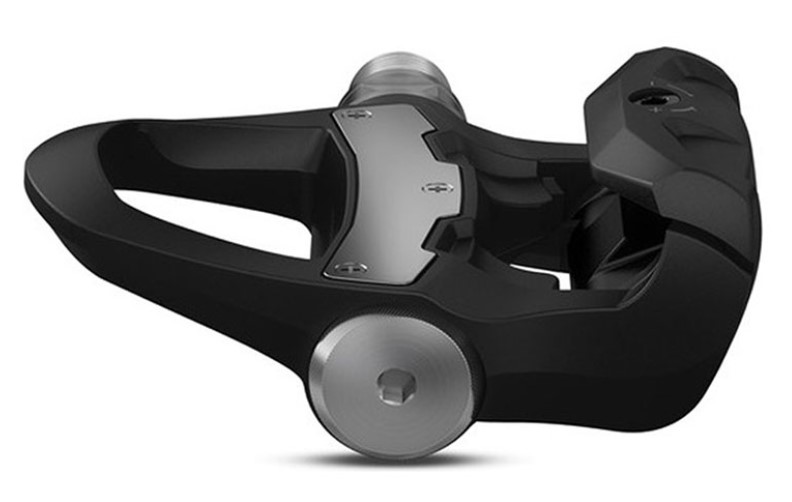 Garmin Vector 3 and Vector 3S pedals
Garmin Vector 3 and Vector 3S pedals
They measure one or two legs respectively.
Weight: The increase compared to top of the range pedals is between 50-100 g. Depending on the model.
Protocol: ANT+ and Bluetooth
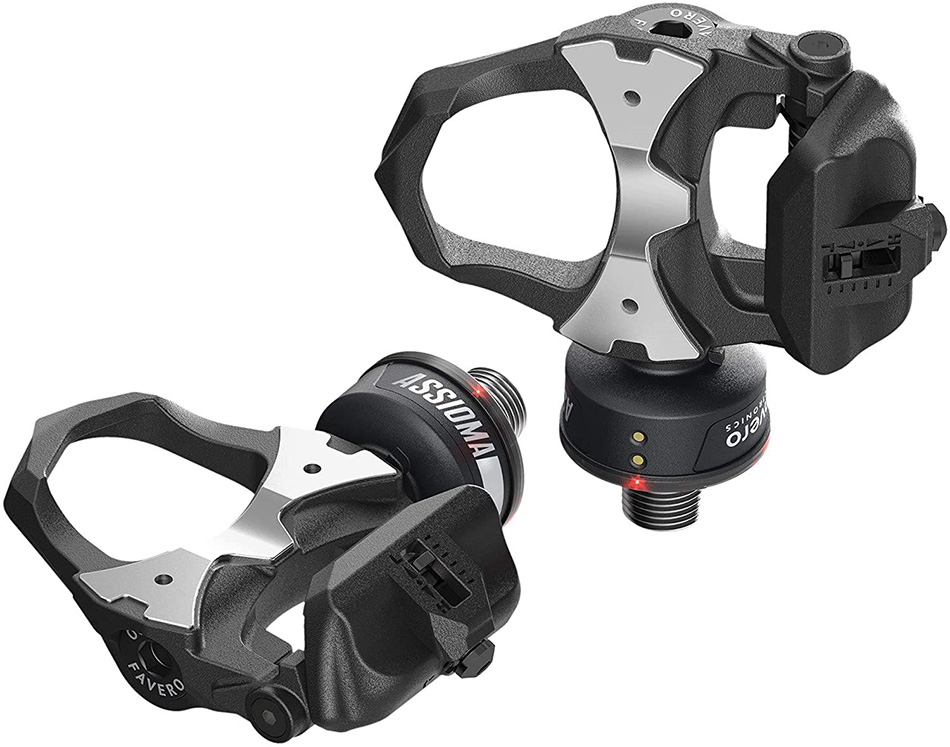 Favero Assioma DUO and UNO pedals
Favero Assioma DUO and UNO pedals
They measure one or two legs, respectively.
Weight: The increase compared to top of the range pedals is around 50-100 g. depending on the model.
Protocol: ANT+ and Bluetooth
You can find more information in this video with an
in-depth analysis of the Favero Assioma pedals.
6. Shoe and Cleat Power Meters
We mention this type of power meter, located
in the sole of the shoe itself because
prototypes have emerged in recent years, but so far
none have been marketed and for this reason, we will not expand further.
Some models can be found with a
sensor in the cleats that is compatible with road pedals, but their presence is not yet significant in the sector.
and you will find the best advice and range of power meters at our
Mammoth stores and at
mammothbikes.com
See power meters at Mammoth
Related articles and videos


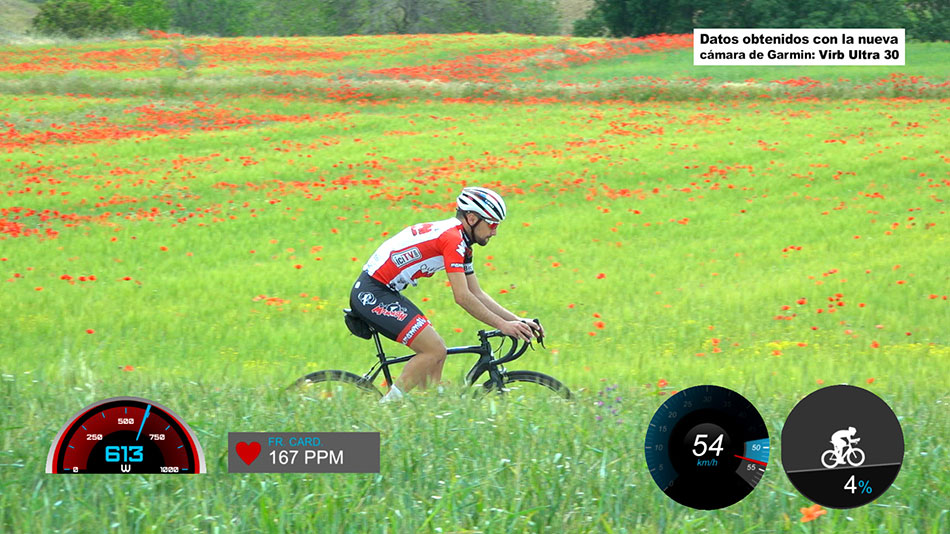
 Power Tap G3
Power Tap G3  Sram Quarq DZero
Sram Quarq DZero 
 4iiii left crank with power meter
4iiii left crank with power meter 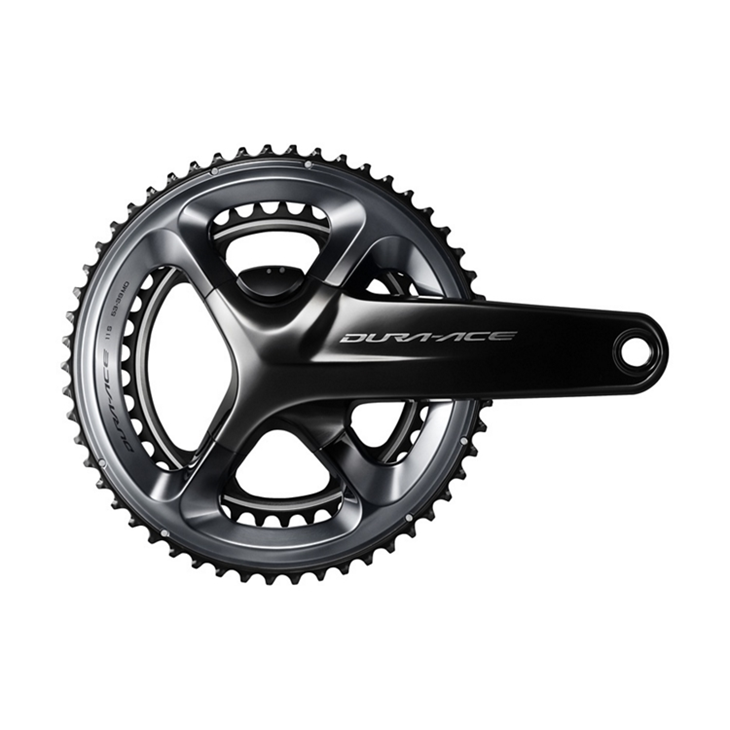
 Rotor Inpower and Rotor 2INpower
Rotor Inpower and Rotor 2INpower 
 Garmin Vector 3 and Vector 3S pedals
Garmin Vector 3 and Vector 3S pedals  Favero Assioma DUO and UNO pedals
Favero Assioma DUO and UNO pedals 
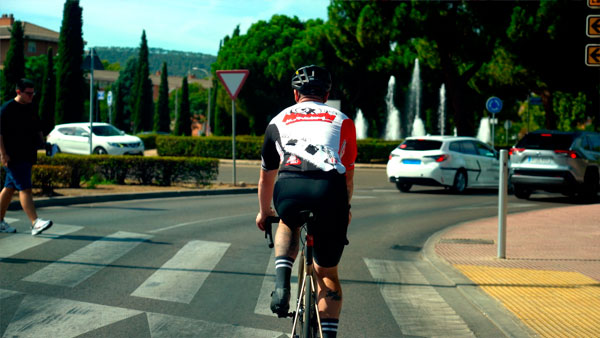



Leave a comment
Be the first to comment on this article.